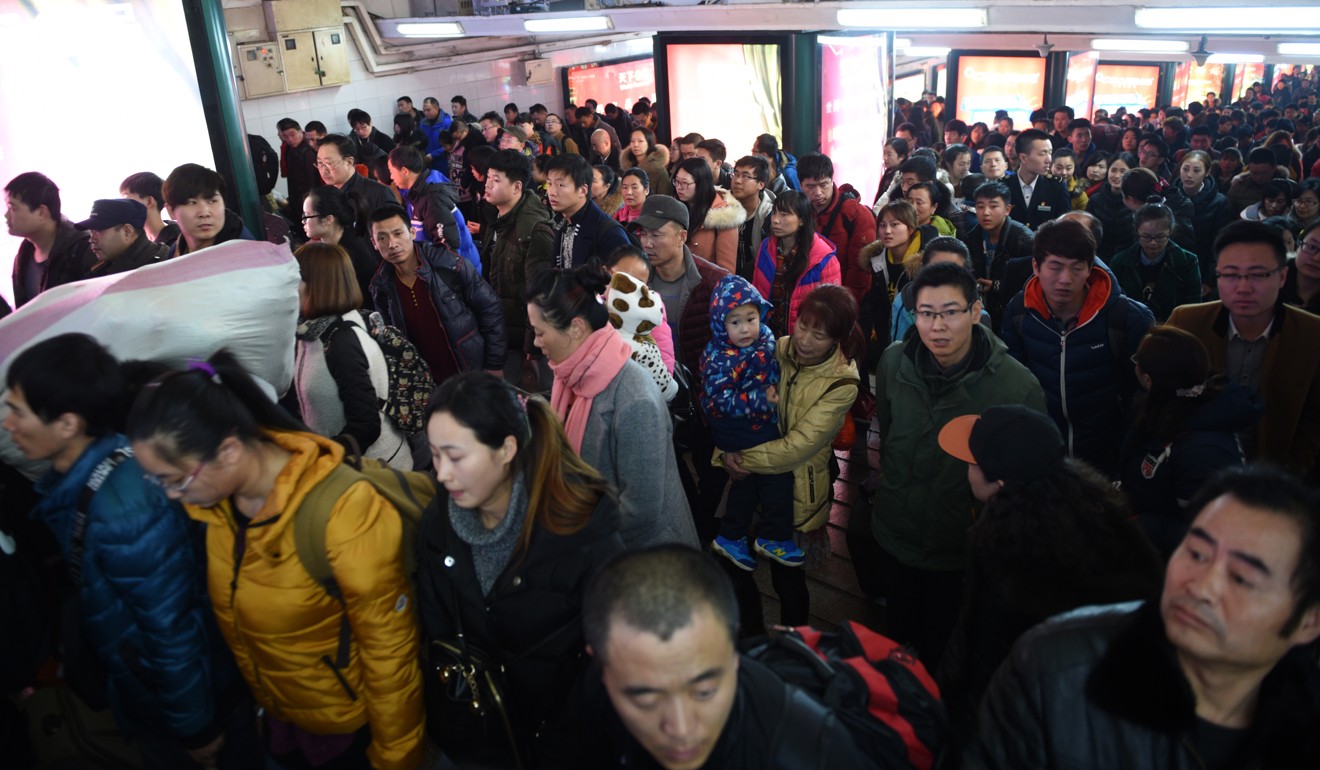
Beijing’s population drops for first time since 2000 as migrants are driven out
Statistics bureau says megacities are ‘less attractive’ for migrant workers
Beijing’s population has dropped for the first time since 2000 as migrant workers are driven out amid a campaign to ease the strain on the sprawling, overcrowded capital city.
Its population fell by 22,000 people to 21.707 million last year, the first decline recorded in 17 years, the municipal statistics bureau said. Figures on the number of migrants living in the capital were not released, but the statistics bureau said megacities such as Beijing had become “less attractive” for them.
The municipal government has been trying to reduce “low-end” sectors since 2014 by pushing out unwanted factories, schools and wholesale markets, but these evictions ramped up at the end of last year following a fire in the south of the city that claimed 19 lives on November 18.
Hundreds of thousands, if not millions, of domestic migrants were evicted from Beijing as a result.
The flow of workers into Beijing from other parts of China has slowed in recent years as they are made to feel unwelcome by the authorities. These migrants leave their families behind to work in jobs far from home to make more money, often doing the difficult, undesirable and low-paid jobs that others do not want to do. In 2016, the number of migrants in Beijing dropped for the first time in over a decade, by 150,000 people, while a similar number also left Shanghai in 2015.

“Against the backdrop of urbanisation across the country, the western and central regions continue to develop and the urban-rural gap is narrowing,” statistics bureau spokeswoman Pang Jiangqian told reporters on Friday. “While megacities are becoming less attractive, some provinces and municipalities are seeing a slowdown or a return to population outflows.”
Pang said that as Beijing removed industries that were not in keeping with its status as China’s capital and built an economy based on advanced technology, there would be fewer workers in labour-intensive sectors, leading to a decline in the population.
Natural population growth – the number of births versus deaths – has also slowed in Beijing. Births in the city were down by 5,000 in 2017 from the previous year, according to the data. But there were 2,000 more deaths last year from 2016.
That is in line with the national situation, Pang said, with China’s total population growing by an annual 0.5 per cent in the past few years.
In 2015, Shanghai recorded its first population decline since 2000, mostly because of migrant workers leaving the city. Its population was 24.15 million that year, down by 104,100 people from 2014. People living in the city but whose permanent residency, or hukou, was in places outside Shanghai totalled 9.8 million in 2015 – a drop of nearly 150,000 from 2014.
In the years since, Shanghai’s population has fluctuated slightly, but the number of people without a local hukou has continued to fall – by 10,000 in 2016 and 75,200 last year.

